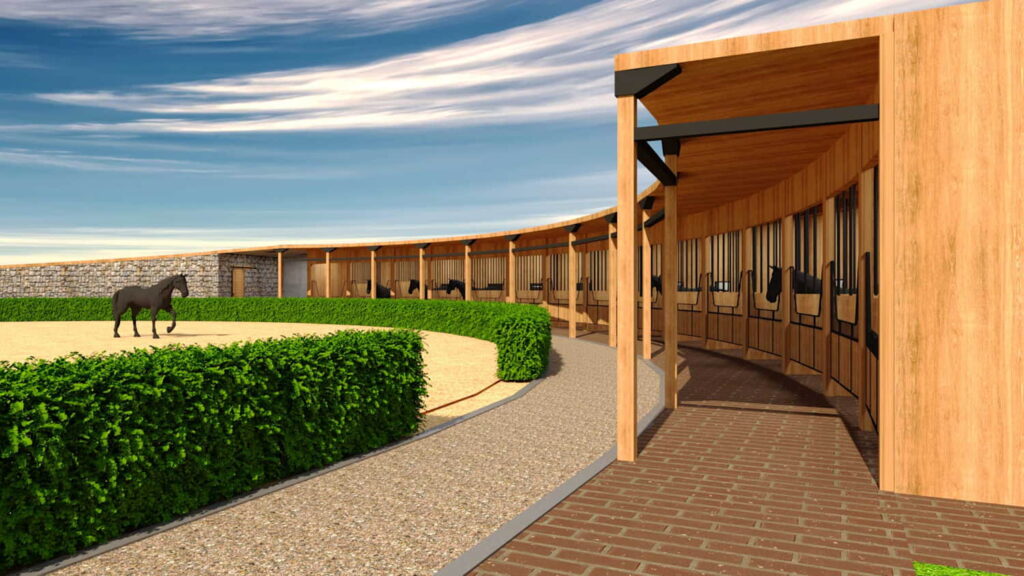Horse facility planning involves creating an environment that meets the needs of horses, their owners, and caretakers. Effective planning ensures a functional, safe, and comfortable space for all residents, considering aspects such as layout, design, and sustainability. Here are the key principles to consider in horse facility planning:
1. Site Selection
Climate and Geography
- Climate Conditions: The climate of the facility’s location directly impacts the design and material choices of structures. In hot climates, shade and proper ventilation are crucial, while in cold climates, insulation and wind protection are prioritized.
- Terrain: A flat and stable ground is essential for the safety and durability of structures. Additionally, a well-planned drainage system is necessary.
Accessibility
- Transportation: Easy access to the facility is important for transporting horses and supplies. Proximity to main roads and emergency services should be ensured.
- Parking: Adequate parking space is required for horse owners and visitors.
2. Facility Layout
Space Utilization
- Stables: The layout of the stables should allow horses to move comfortably and provide easy access. Stable dimensions should suit the size of the horses.
- Paddocks: Paddocks where horses can roam freely outdoors are essential for their physical and psychological health. These should be surrounded by sturdy fences and be spacious enough.
- Feed and Hay Storage: Storage areas for feed and hay should be close to the stables for easy access.
Functional Areas
- Maintenance and Cleaning Areas: Separate areas for horse maintenance and cleaning should be provided. These areas should have easy access to water and electricity.
- Training and Exercise Areas: Indoor and outdoor arenas are necessary to meet the training and exercise needs of horses. These areas should have good drainage and safe surfaces.
3. Health and Safety
Hygiene and Cleanliness
- Regular Cleaning: Regular cleaning of stables and other areas is essential for maintaining horse health. Surfaces should be easy to clean.
- Waste Management: Proper management of manure and other waste is crucial for environmental and health reasons. Composting systems and waste recycling practices can be implemented.
Safety Measures
- Fences and Barriers: Fences used in paddocks and other open areas should be strong and secure to prevent horses from escaping.
- Emergency Plans: The facility should be prepared for emergencies like fires and natural disasters. Fire extinguishing equipment and clearly marked emergency exits are essential.
4. Sustainability
Energy and Water Efficiency
- Solar Energy: Solar panels can be used to meet the facility’s energy needs, reducing energy costs.
- Water Management: Rainwater collection systems and water recycling practices ensure efficient use of water resources.
Eco-Friendly Materials
- Natural and Recyclable Materials: The materials used in construction and maintenance should be environmentally friendly.
5. Comfort of Horses
Ventilation and Lighting
- Natural Ventilation: Good ventilation in stables and other enclosed areas improves indoor air quality and protects horses’ respiratory health.
- Natural and Artificial Lighting: In addition to natural light sources, energy-efficient artificial lighting systems should be used.
Bedding and Comfort
- Comfortable Bedding: Natural bedding materials that provide comfort for horses should be used. This enhances the quality of sleep and overall well-being of the horses.

